
Welcome To The Armstrong`s Website.
ARMSTRONG Family Statistics:
Born since 1900: 10,507
Born in the 1800s: 18,082
Born in the 1700s: 3,894
Born in the 1600s: 576
Born in the 1500s: 113
Born before 1500: 1,568
Unknown Birth Date: 22,510
The origins of this powerful Border family are said to go back to a "Siward Digry" (sword strong arm) who was the last Anglo-Danish Earl of Northumberland and a nephew of King Canute, who reigned in the 11th century. The name became widespread in the north of England and the Scottish Borders but their main power base became Liddesdale in the Borders. Gilbert Armstrong was a steward of King David II and in 1363 acted as an ambassador to the English court of King Edward III.
The family grew in strength and could muster 3,000 horsemen and virtually controlled the whole Border region at one stage. This meant that they were in a more or less constant state of conflict with the English lords and earls on the other side of the border with England.
The power of the Armstrongs became a perceived threat to the monarch of Scotland and King James V (who reigned from 1513 to 1542) tricked John Armstrong of Kilnockie into meeting him at Hawick - and promptly hanged him. A few years later, however, the Armstrongs refused to support King James V's invasion of England. It is possible that this made a difference at the Battle of Solway Moss in 1542, which cost King James his life.
The Union of the Crowns in 1603 brought an official end to the cross-border conflicts but old habits died hard. In 1610 the Armstrong laird was hanged for a reiving (cattle rustling) raid on Penrith. The Armstrongs were scattered at that time and there has been no chief of the clan since then. Many Armstrongs moved to Northern Ireland and also around the world.
The most travelled Armstrong has to be Neil Armstrong who was the first man to walk on the moon.
The Armstrong motto is "Invictus maneo" which means "I remain unvanquished".
Surnames regarded as septs (sub-branch) of the Armstrongs include Fairbairn and Nixon.
History of the Name
There was a traditional story that the progenitor of the clan was a Fairbairn, an armour bearer of a king of Scotland who went to the assistance of his master when the king had his horse killed under him in battle. Fairbairn, grasping the king by the thigh, set him on his own horse. For this service the king granted Fairbairn lands on the Borders, and gave him the name Armstrong.
After William the First conquered England in 1066, he rewarded his followers with land grants. Amongst these followers were ones known as "Forten Bras" which literally translates as "strong in the arm", itself a rare surname, and from these people developed the Armstrangs or Armstrongs. The name was not uncommon in the north of England in the latter half of the 13th century. The clan has always been centered at Liddesdale in Cumbria, where its fierce and warlike members were enlisted by the Scottish and English kings in turn. The terms "Moss Troopers" and "Border Reivers" were applied to the clan Armstrong, the history of the clan being the history of "The Border" and the wars between England and Scotland. An act passed by the Scottish Parliament in 1587 'for the quieting and keeping in obedience of the inhabitants of the Borders, Highlands and Isles' containing a roll of 'the clans that have Captains, Chiefs and Chieftains as well on the Borders as the Highlands', proves that as long ago as the sixteenth century Border families were described as clans, and one of the most important of these families was the Armstrongs.
Early records of the name include Adam Armstrong who was pardoned at Carlisle in 1235 for causing the death of another man, and William Armestrangh served on an inquisition in the same city in 1274. Richard Harmestrang made a loan to King David at Calais in the year 1342. The Armstrongs of Gillnockie were the principal branch of the clan, and John Armstrong of Gilnockie in the early part of the 16th century was captured, through a stratagem, by King James V. and, with over thirty of his followers, was hanged at Carlingrigg.
DAD`S SIDE OF THE FAMILY
I will start with what I know of family on my dads side, very little I am afraid. My granddad was called Thomas Armstrong (1873), I think he came from Seaton. He was known as wild Tommy in the village of Thornley where he had his family. His wife my great grandmother was Annie Holt (1877) I know he has sons Thomas (Tommy), Norman, James (Jimmy), my dad Wilfred and I think there was a daughter, Lillie, might have gone to America. I did meet my uncles and I went to school with my cousins, mainly Norman, Normans son. Norman (my uncle) had three sons, Derek, Norman and Barry. They lived at Thornley. My uncle Thomas had a lot of daughters and lived at Wheatley hill in the “streets” 1st street I think. I only came in close contact with my great granddad once, when he came to visit at Ruskin Terrace in Thornley in about 1948. I remember he gave us a very large beautiful sideboard. Wish I had it now, very very nice piece of furniture. I regret not knowing the family very well, but in those days I never thought about todays standards or requirements. Just young and stupid.
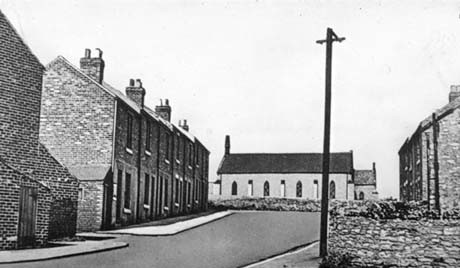
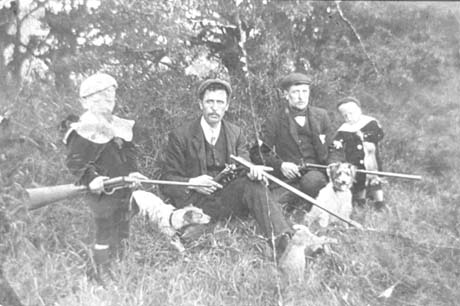
Above left, School Square Thornley, where My Grandfarther, wild Tommy lived. Above right, Mr Tom Armstrong and Son on the left, Mr Chas Bullock and Son on the right,
The Photograph above left is showing, on the left of the picture, a boy aged approximately seven years, wearing a suit and cap, holding a shot gun; next to him is a dog and, next to the dog, a man wearing a suit, tie and cap, sitting on the ground and holding another shot gun, with the body of a rabbit lying on his foot; this man and boy have been identified as Tom Armstrong and son; next to Tom Armstrong is another man wearing a suit, tie and cap, carrying a shot gun and with a dog sitting in front of him; next to him at the right of the picture is a small boy, aged approximately five years, holding a dead rabbit; this man and boy have been identified as Chas Bullock and son; they are described as being in Thornley Date: 1900 - 1909 I wonder if this boy in the front is "wild Tommy"?
This is my dad Sargeant Major Wilfred Armstrong, 3rd from the left in picture one, 2nd from the left in picture two. Durham light infantry days about 1942.
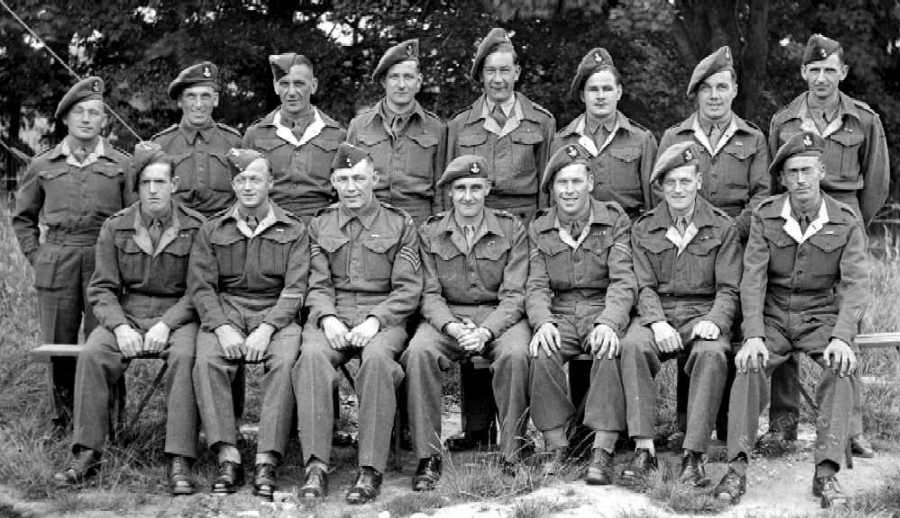
Above another army picture of my farther at Branspeth,front row, third from the left.
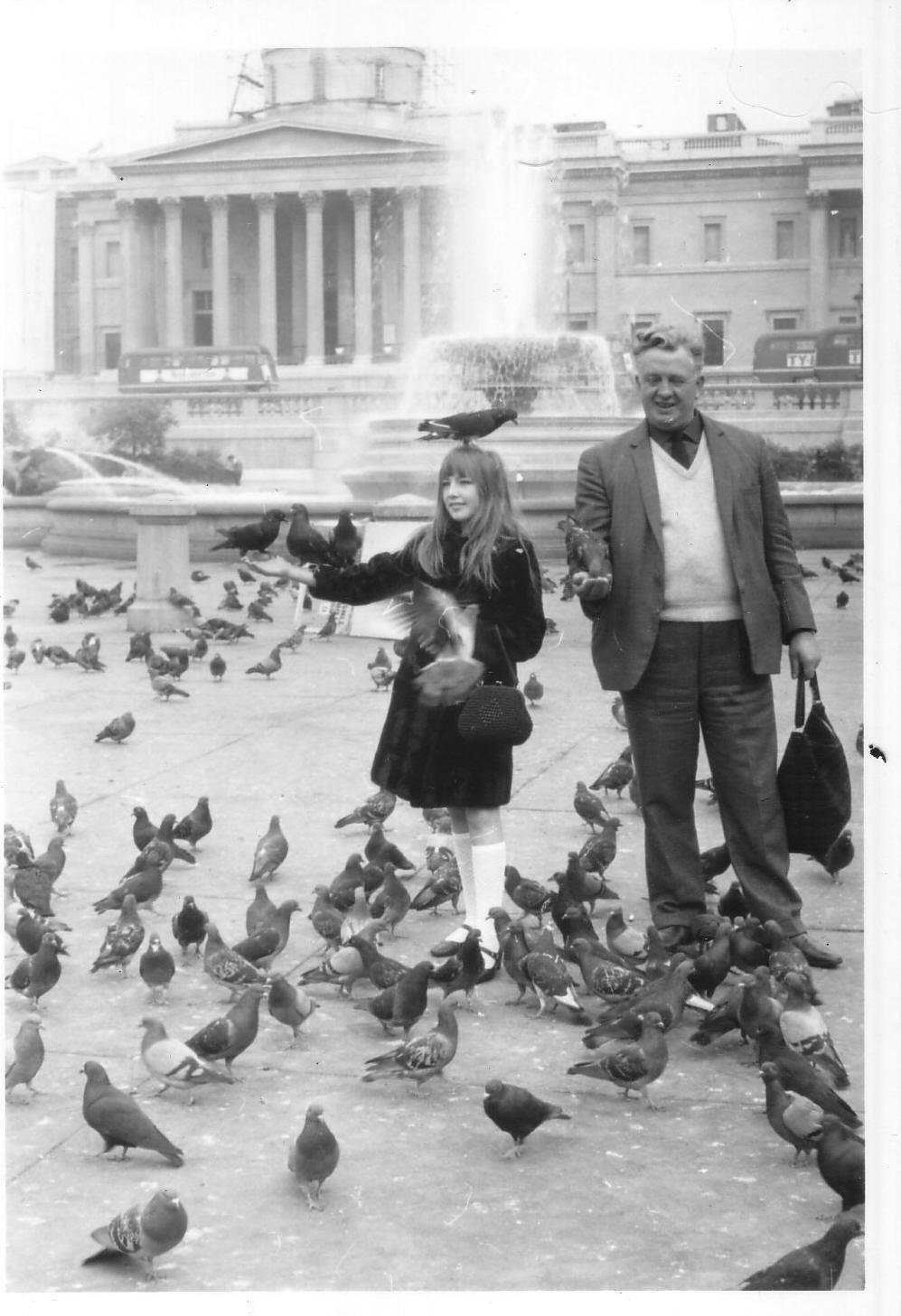
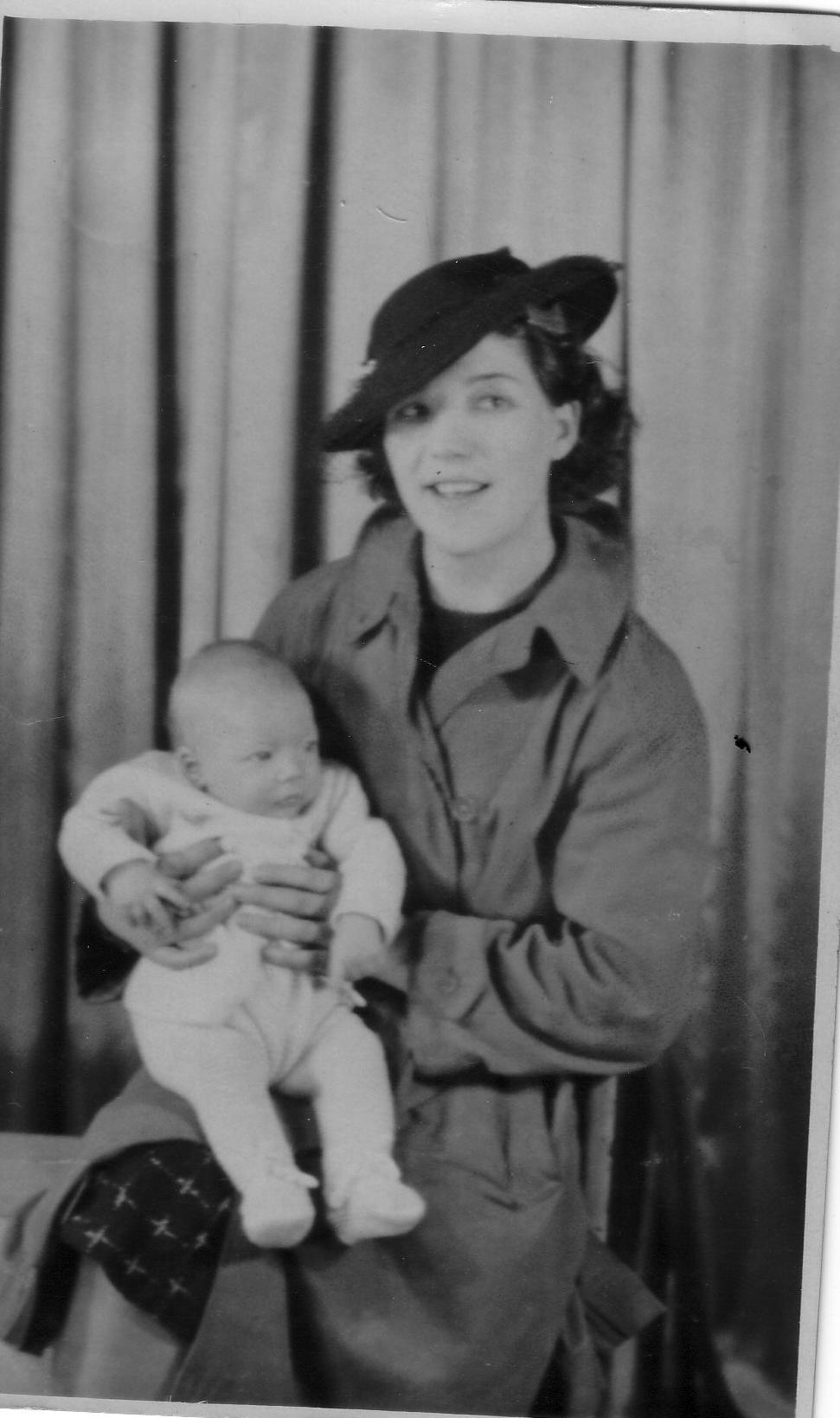
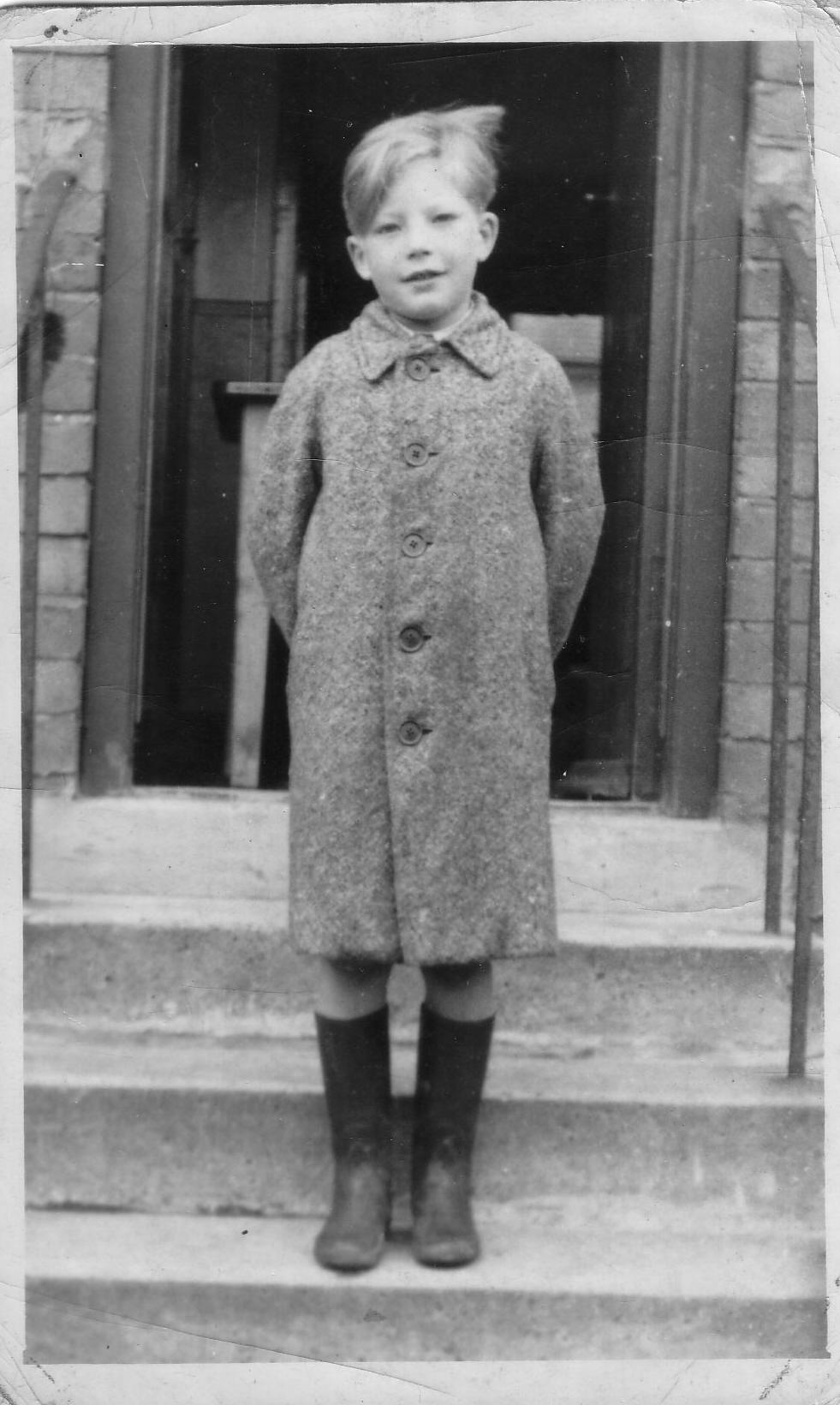
This is my dad and sister Doreen,dad loved his pigeons. This is my mother and myself about 1941 and this is me at Ruskin Crescent Thornley about 1948
I don`t know exactly what went on but my mother and farther had a big falling out. I know that my dad joined the army even though he was in a reserve occupation. I can only assume that he wanted to get away for a while. Anyway my mother also joined up, the ATS, So I was left in the care of my grandmother (Sarah Howe ) and my mothers half sister (Doreen) until the war ended. My parents got back together, but it was quite an unstable relationship, however they stayed together all of their lives.
This is my dad and sister Doreen, Crimdon about 1956, plus me outside of Baldazeras ice cream shop Wheatley Hill, same time period.
Green jacket with silver lurex cross banding. I always wanted to get to know the girl with her hand up to her mouth, but never dared to talk to her. If you know who it is please let me know.
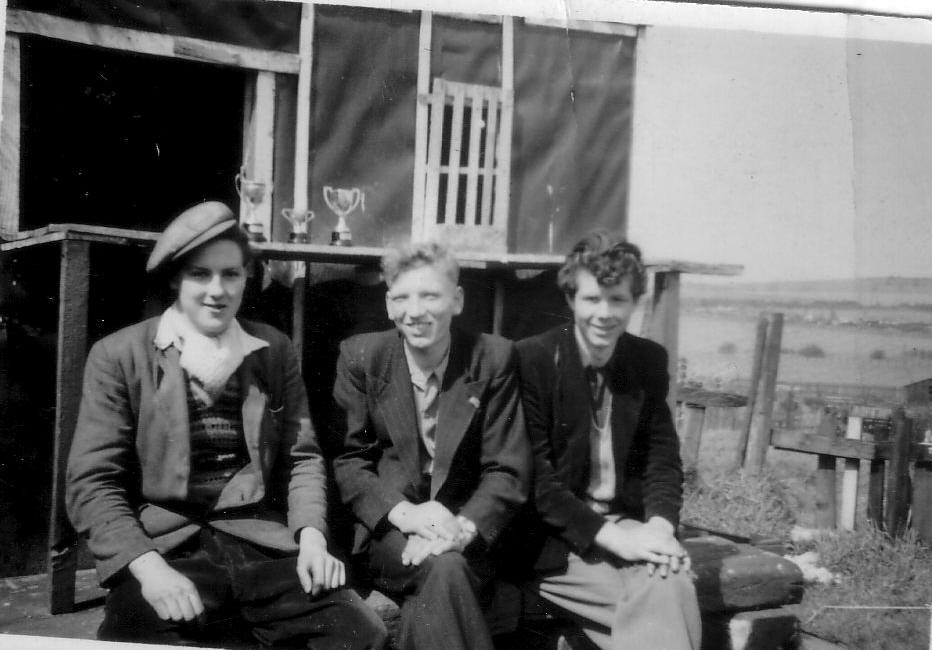
R.E. the above picture, taken at 8 Coopers Terr Thornley,Co. Durham, 1953.
In the middle is my older cousin Derek Armstrong, the chap on the right looks like a Day( not sure),but I knew a younger brother looked exactly like that, Richard had a Norton 88.
The silver cups behind were won by my farther for pigeon racing. I still have the "Selby cup" The one on the right.The picture on the right is of an old Douglas Dragonfly. I remember being very impressed meeting Derek one day when I was out for a walk and he had a bike just like that one. No tax or insurance of course, he was using a woodbine packet as a road tax disk. It was a different world in 1949.
My farther (Wilfred Armstrong) worked at Thormley coliery for almost all of his life. Moving up through the ranks, from miner, underground, to eventually being "Keeker".
The "keeker" in the Durham mines was the man in charge of the surface of the colliery, Here was the place where the coal, hewed with such effort and drawn off the coal face in tubs, was measured and weighed. The miners were paid by the weight of coal in their tubs and if there was too high a proportion of stone payment was reduced. So important was the weighing on the surface that miners had their own "check weighman" to check the master's weights. In all this, of course, the “keeker” was a central figure.

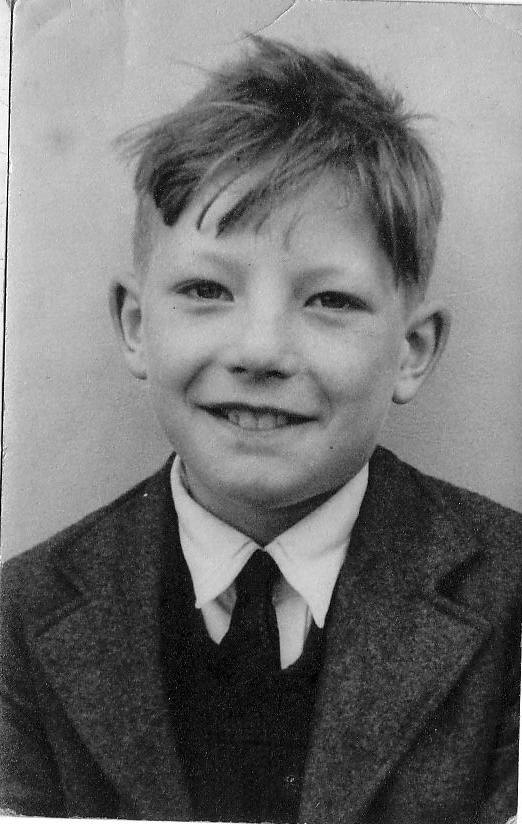
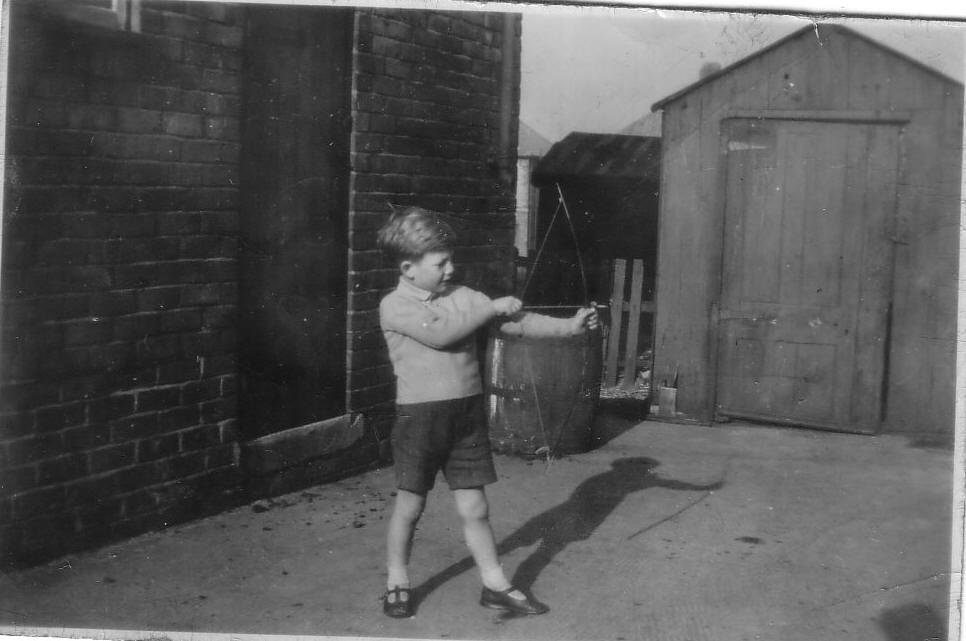
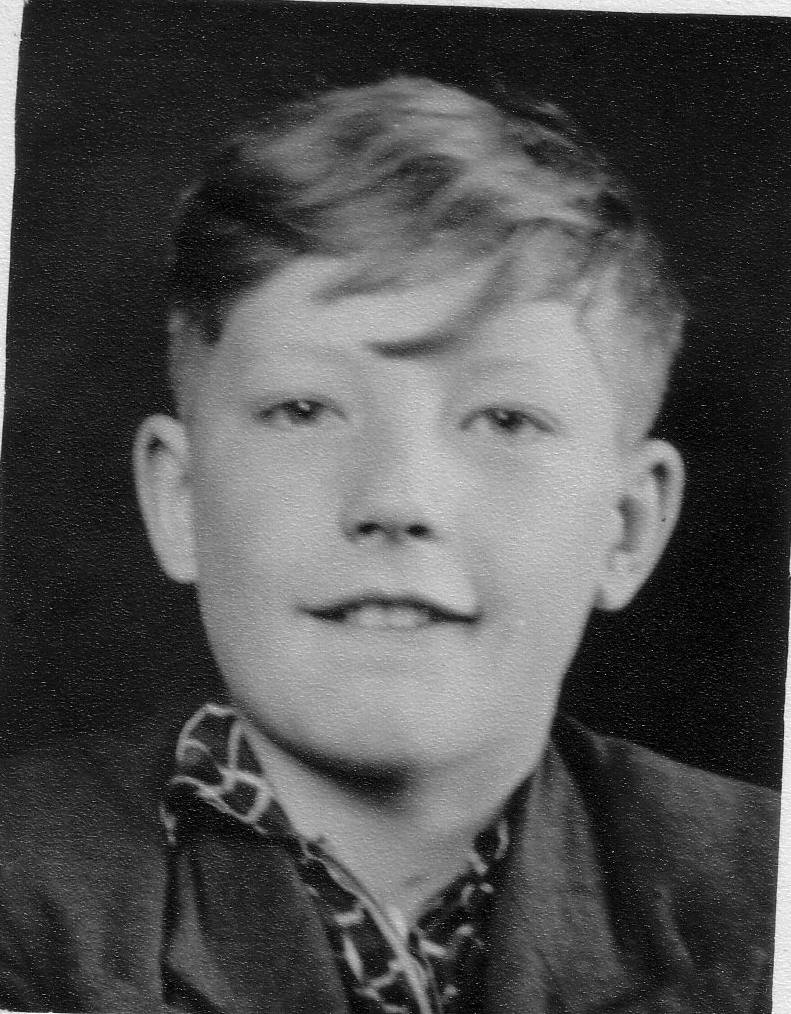
This is a few pictures of me growing up.
MOTHERS SIDE OF THE FAMILY
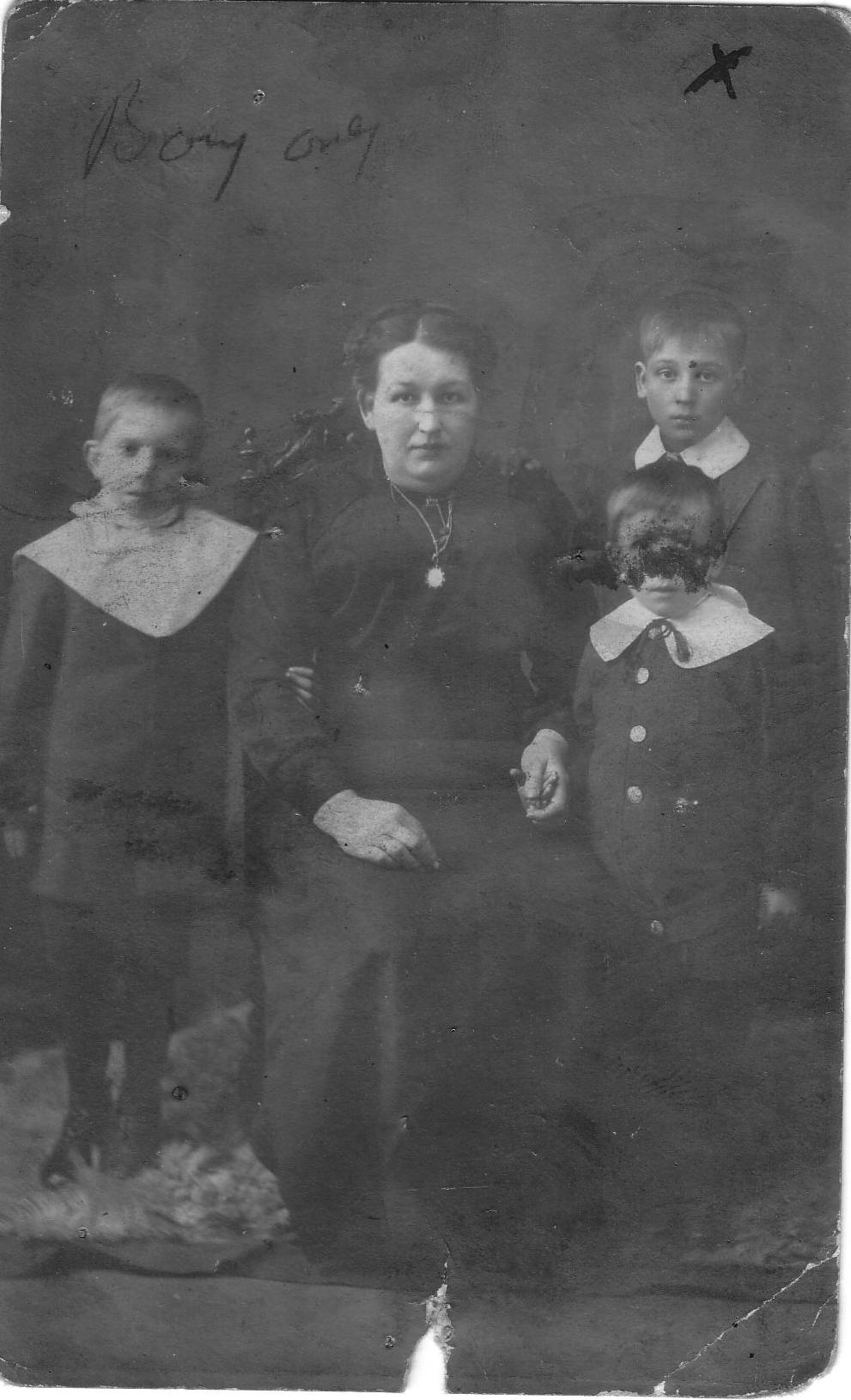
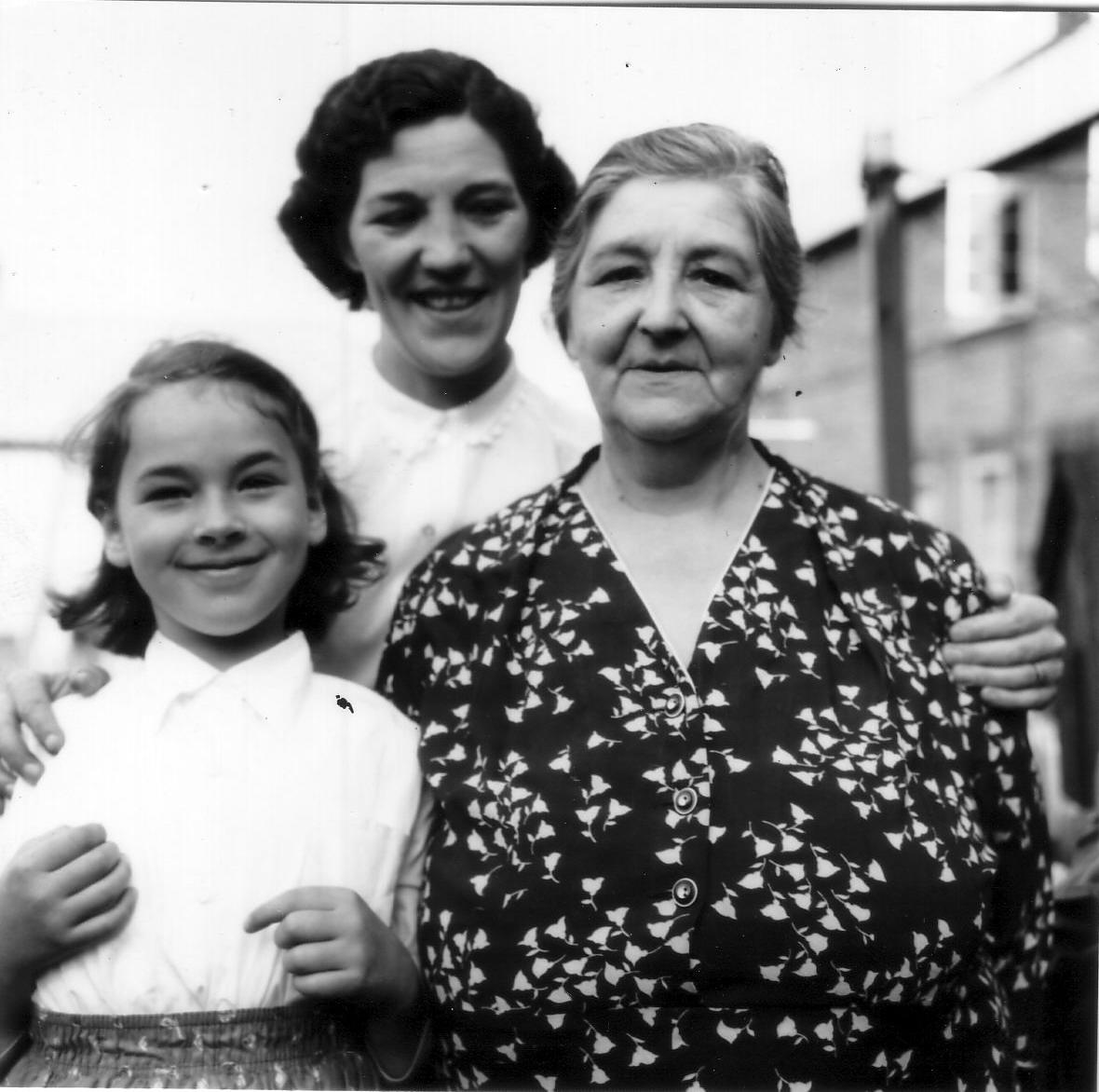
Great grandmother Robinson,with sons.Sydney,William,& Harold.She also had Rebeca,(below x 2 )& Sarah, my grandmother pictured above right , with my mother & cousin Sally (Uncle Toms Girl).Wheatley Hill,1963.
The pictures above are of my mother in the ATS. 3rd right 2nd row up in the first picture.
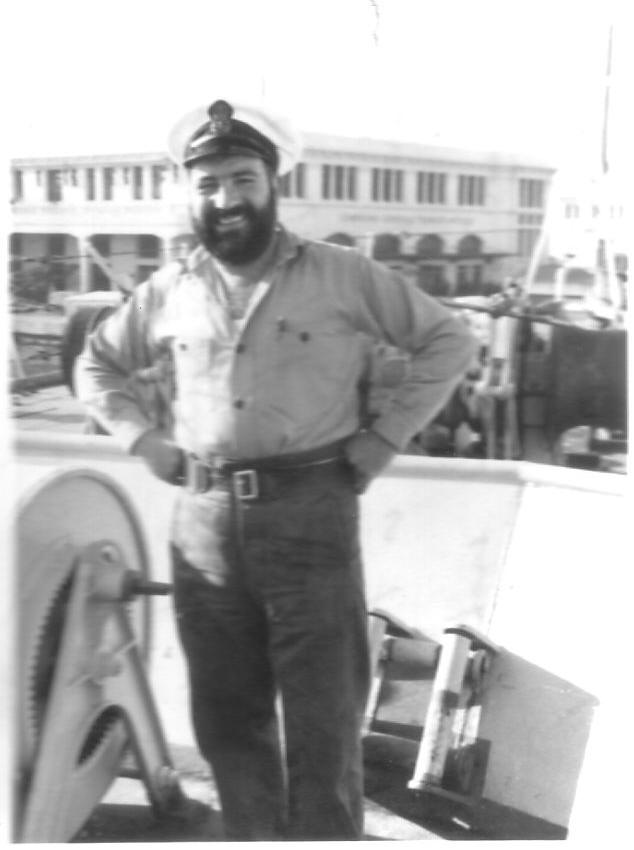
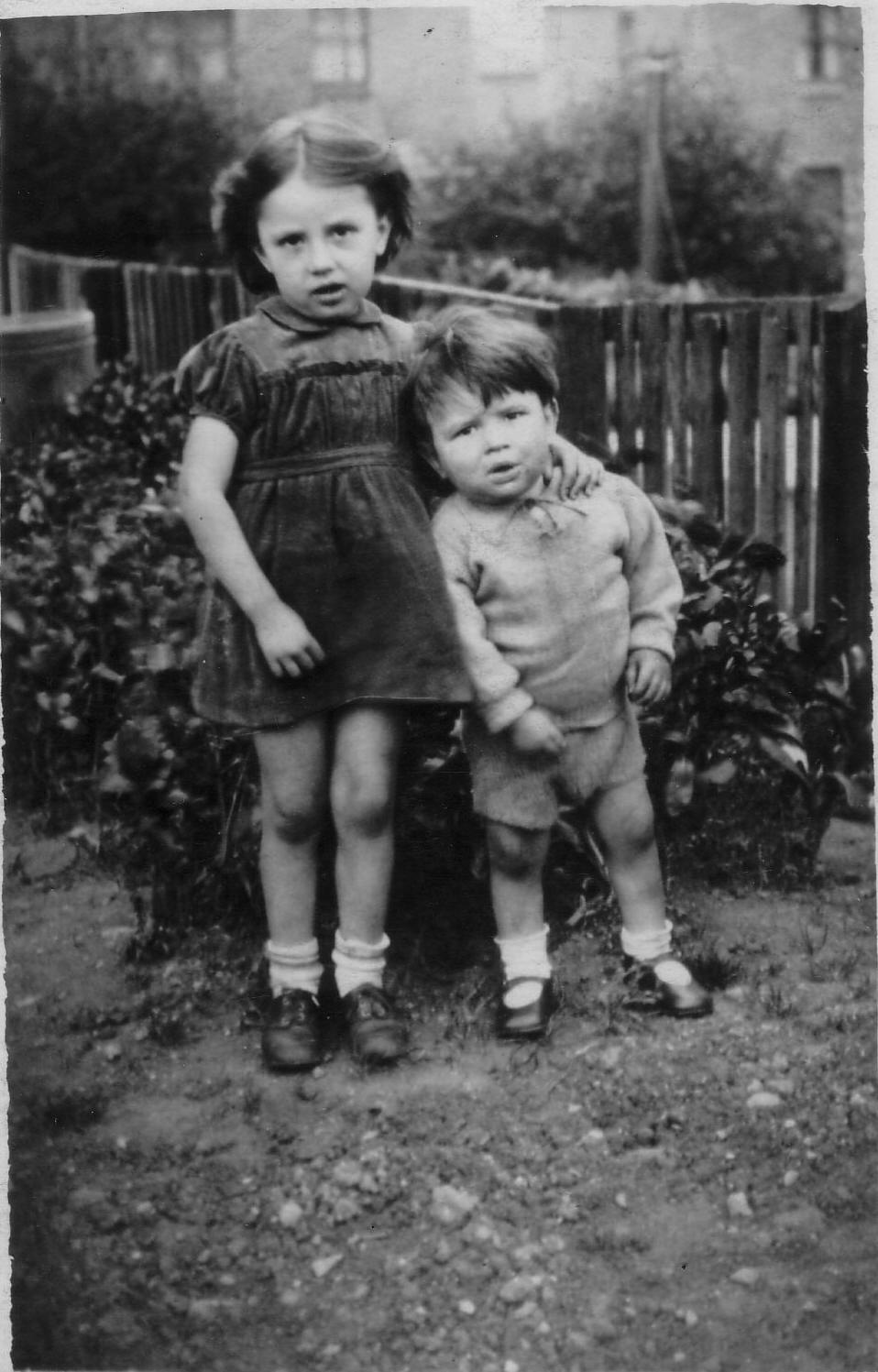
Above left, my mother Emily and her brother Bob,with 1/2 sister Doreen. Middle Uncle Tom. Right Great Aunt and uncle, Rebeca and Sydney Robinson.
Uncle Bob (Robert Howe) married a girl called Edna Glanvil and they had a doughter, Margret Howe. Shown on the left below. Taken 24th March 1948. I remember the family were strong Salvationists.The picture on the right is, from left to right Edan, my mother Emily and Edna`s sister Vera.
From what I can gather my mothers side of the Armstrong family is quite complicated. My Grandmother Sarah Robinson was, married twice firstly to Billy Moore, having one or two sons Billy Moor, possibly Laurence Moore and the second time to William Howe, one daughter ( my mother Emily Howe ) and two sons Bobby Howe and Tom Howe. Sarah had 3 other children Victor, Doreen, and Kenny in other relationships. Frowned on at the time normal now. Quite a lady.
Above my most prized possession what a picture. My uncle Kenny and my aunt Doreen. I never knew him not to be laughing and my aunt Dot just about brought me up. Can you see the puppy they have.Also the flower in his button hole. Must be Sunday as they have on the Sunday best, so happy.
Below is shown the Medal and pocket watch that belonged to my Grandfarther Mr W. Howe.
The 1914 Star
Established in April 1917. Also known as 'Pip' or the 'Mons Star'. This bronze medal award was authorized by King George V in April 1917 for those who had served in France or Belgium between 5th August 1914 to midnight on 22nd November 1914 inclusive. The award was open to officers and men of the British and Indian Expeditionary Forces, doctors and nurses as well as Royal Navy, Royal Marines, Royal Navy Reserve and Royal Naval Volunteer Reserve who served ashore with the Royal Naval Division in France or Belgium. A narrow horizontal bronze clasp sewn onto the ribbon, bearing the dates '5th AUG. - 22nd NOV. 1914' shows that the recipient had actually served under fire of the enemy during that period. For every seven medals issued without a clasp there were approximately five issued with the clasp. The Silver Heraldic Rose worn on a 1914 Star ribbon Recipients who received the medal with the clasp were also entitled to attach a small silver heraldic rose to the ribbon when just the ribbon was being worn. The reverse is plain with the recipient's service number, rank, name and unit impressed on it. It should be remembered that recipients of this medal were responsible for assisting the French to hold back the German army while new recruits could be trained and equipped. Collectively, they fully deserve a great deal of honour for their part in the first sixteen weeks of the Great War. This included the battle of Mons, the retreat to the Seine, the battles of Le Cateau, the Marne, the Aisne and the first battle of Ypres. There were approximately 378,000 1914 Stars issued.
Not Awarded Alone
Like the 1914 Star, the 1914-15 Star (shown)was not awarded alone. The recipient had to have received the British War Medal and the Victory Medal.(don`t know where they are now) The reverse is plain with the recipient's service number, rank, name and unit impressed on it.
Authorized in 1918
Also known as 'Pip' this bronze medal was authorized in 1918. It is very similar to the 1914 Star but it was issued to a much wider range of recipients. Broadly speaking it was awarded to all who served in any theatre of war against Germany between 5th August 1914 and 31st December 1915, except those eligible for the 1914 Star. Similarly, those who received the Africa GSM or the Sudan 1910 Medal were not eligible for the award
Above some other inherited family memorabilia, may be of interest to future generations.
On the left a vesta, match holder, and a cup winners cup medal, belonged to (and won by) Joe Colby my uncle, he was the co managed of the Colliery Inn, in Thornley with my aunty Beatie, I worked in the pub after school and in the evenings.
In the middle is my mothers (Emily Armstrong nee Howe) necklace.
On the left some medals from a person I grew up with, in my grandmothers household, known as my granddad, Mr Luke Walton a kindly gentleman. I also remember my great granddad Mr Robinson (Grandmother Sarah Howe nee Robinson`s dad) being in the same house when I was about eighteen months old.1941
Now that is a one off picture above, taken in my grandmothers front room at station town Wingate. Must be 1955.
Left to right,Cousin Pauline (Uncle Billy Moors daughter) Cousin Eileen, aunt Doreen and aunty Ann (Uncle Victors wife Eileen's mother.)
Note the electric clock on the mantle piece, always told the wrong time as no one was allowed to touch it. When the electricity went off and came on again, the clock was of course wrong, but the household believed that the electric man would send more electric through to put it right.
That is a full size black leaded open coal fires stove behind the people with a very large oven. Whitewashed inside and black leaded outside on a daily basis. On the mantelpiece you can see some spills next to the candle stick to light granddads pipe. The cuckoo clock on the right always fell off the wall when the cuckoo sounded and had to be fixed regularly.
Also notice the green cloth pelmet nailed onto the mantelpiece and the obligatory mirror above the fireplace
Cousin Eileen was a lovely girl and used to come down from Scotland where she lived with her mother and father, to stay with us for short holidays. I believe her father Victor was a wireless operator in the Navy. Morse code etc. Uncle Tom was also in the Navy stationed at Chatham near London. Sunk twice in the war but survived. He was a gunner chief.
BACK TO HOME PAGE